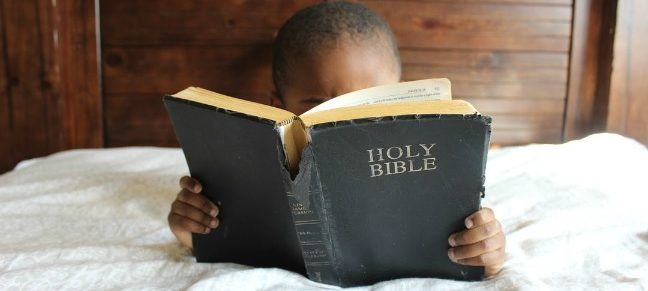Jan. 26 Reading: Exodus 25-27 Commentary
Below is our Exodus 25-27 commentary from our Beginning to End Bible reading program. You can find an email link at the end of this page to share your thoughts or comments with us.
Key Verse(s):
“And let them make Me a sanctuary, that I may dwell among them.” (Ex. 25:8)
Exodus 25 – The Ark of the Covenant
 The Bible details several truly remarkable pieces of architecture and construction in Exodus 25 and 26 – the Ark of the Covenant and the Tabernacle. Both were necessary because they would serve as the dwelling place of God’s spirit among the people. It’s a foreshadow of how God’s spirit would ultimately dwell within us.
The Bible details several truly remarkable pieces of architecture and construction in Exodus 25 and 26 – the Ark of the Covenant and the Tabernacle. Both were necessary because they would serve as the dwelling place of God’s spirit among the people. It’s a foreshadow of how God’s spirit would ultimately dwell within us.
In order to construct the sanctuary, God required an offering. He did not want to force it on the people though. He told Moses, “From everyone who gives it willingly with his heart you shall take My offering” (v. 2). A person’s heart attitude was and still remains the standard for proper giving. As Paul would later say in II Cor. 9:7, “So let each one give as he purposes in his heart, not grudgingly or of necessity; for God loves a cheerful giver.”
The Ark of the Testimony
The most important religious symbol for the nation of Israel was the Ark of the Covenant. The ark was the place where God spoke to Moses (v. 22). It held other noteworthy religious symbols like the stone tablets on which God wrote the Ten Commandments, and possibly at one point a jar of manna and Aaron’s rod (see Hebrews 9:4).
Its form was different from any other nation’s religious symbols. It was a box made of acacia wood and overlayed with pure gold, inside and out (vv. 10-11). The people crafted rings into its sides through which poles were placed to carry it. A “mercy seat” (the lid for the ark) sat on top of the box (v. 17). At each end of the mercy seat was placed a carved cherub (angel) of gold with outstretched wings that covered the mercy seat. It was in that space between the angels wings above the mercy seat that God would meet with and speak with Moses.
Related Content: Six Things You May Not Know About the Ark of the Covenant (at Crosswalk.com)
Tables and Lampstands
Other items besides the ark were placed in the sanctuary. The table of showbread was constructed to display 12 loaves of bread before the presence of the Lord. These loaves represented the 12 tribes and were placed six loaves to a row. This bread would be eaten by the priests at certain times (Lev. 24:5-9) and was once even eaten by King David when he fled from Saul (I Sam. 21:1-6).
Additionally, they hammered a golden lampstand (or menorah) out of one piece of pure gold. It contained six branches coming out from it, three on either side. The purpose of this piece was to illuminate the interior of the holy place. But it’s intricate design shows God’s appreciation for and pleasure in artistry.
Exodus 26 – The Tabernacle
The tabernacle was where God dwelt among the people. It served as the center for all religious activities. It was positioned at the center of Israel’s encampment, symbolizing God at the center of their lives. It’s design was detailed yet simple, as it needed to be taken down and moved as the people traveled through the wilderness.
They made a curtain from goat’s hair to set the outer boundary (the tabernacle wall) (v. 7). The altar of burnt offering and the bronze laver were placed inside the tabernacle courtyard. These items set in front of the holy place, which was covered by a curtain.
Inside the holy place was the table of showbread, the golden lampstand and the altar of incense. A subsection of the holy place was known as the Most Holy Place. This housed the ark of the covenant.
Tabernacle Image One
Tabernacle Schematic
Exodus 27 – The Altar of Burnt Offering
Besides the holy place, the most dominant figure in the tabernacle was the altar of burnt offering. It set inside the courtyard (Ex. 27:9-19), directly through the main gate. It was seven and half feet square and four and half feet high (v. 1). They placed horns on each corner of the altar, most likely to assist in securing the animal sacrifices (v. 2). The priests sprinkled the horns on the altar with blood from the sacrifices (Ex. 29:12).
Questions to Consider:
Today, God doesn’t live in a structure but in the hearts of those who believe in him. What encouragement do you get knowing that the Spirit of God dwells within you? How do you sense his presence on a daily basis? Do you have a habit of meeting with the Lord each day?
What other points would you want to know about in our Exodus 25-27 commentary? Email us here with questions or comments.
Tabernacle Image 1 and Tabernacle Schematic courtesy of Wikimedia Commons


